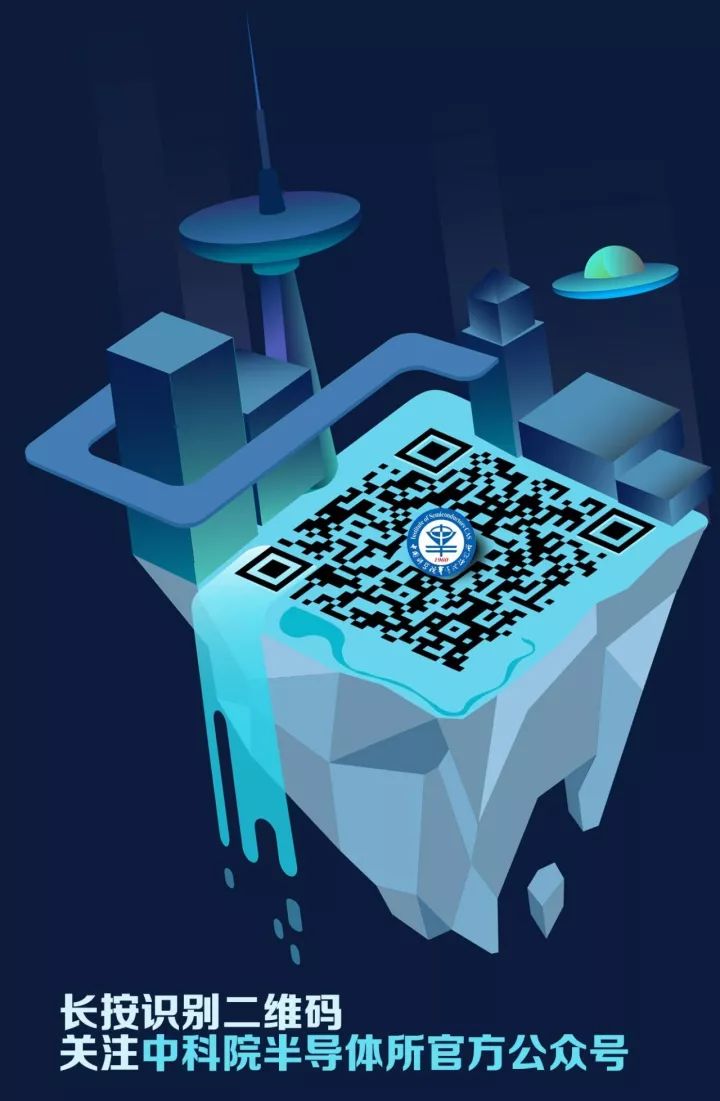
Wireless sensor networks are a new technology for information acquisition and processing, integrating the logical information world with the objective physical world. Wireless sensor networks show broad application prospects in more and more fields.
Cloud computing is a flexible way to organize and provide IT resources. It supports distributed storage and parallel processing, with its data processing framework handling most data locally without the need for extensive remote data transmission.
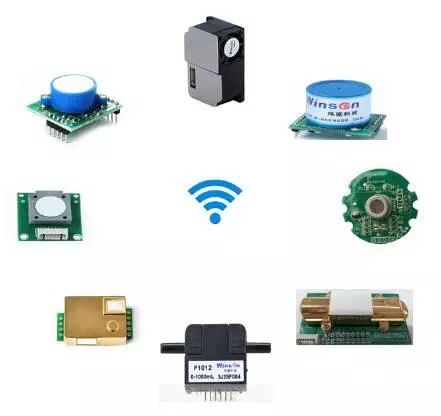
Cloud Sensors
Cloud sensors integrate measurement perception, network transmission, and cloud components. Their characteristic is the integration of sensing components and networking components, where the data collected by sensors is directly uploaded to the cloud platform, allowing users to use the data directly from the cloud platform, saving the cost of intermediate transmission processing circuits.
Advantage 1: Easy to use; users can read the measured data from the sensors directly via a computer or mobile phone after powering on;
Advantage 2: Cloud computing enables real-time networking of cloud sensors, allowing the cloud platform to utilize real-time sensor data for big data processing, and the results of big data processing can also be fed back to the cloud sensors. The most direct application is to achieve online dynamic calibration of sensors, using big data to eliminate local measurement errors;
Advantage 3: Convenient for customers to quickly develop secondary applications, saving complex cloud construction and reducing costs.
Cloud Computing-Based Wireless Sensor Networks
1. Architecture
The architecture of cloud computing-based wireless sensor networks is as shown in the figure. A group of special nodes distributed in the wireless sensor network (WSN) area is called cloud nodes. Cloud nodes have richer resources than sensors and have two functions. On one hand, these nodes form the cloud and are part of the cloud; on the other hand, they can communicate with sensors to collect data from adjacent sensors, also referred to as aggregation points (point sink). Sensors send perception data to a certain aggregation point (in a multi-hop manner), and the aggregation point then stores the data in the cloud. Sensors that send data to the same aggregation point form a group; to distinguish it from the concept of clusters in WSN, this group is called a zone. For sensors, the entire cloud appears as a virtual aggregation node (virtual sink).
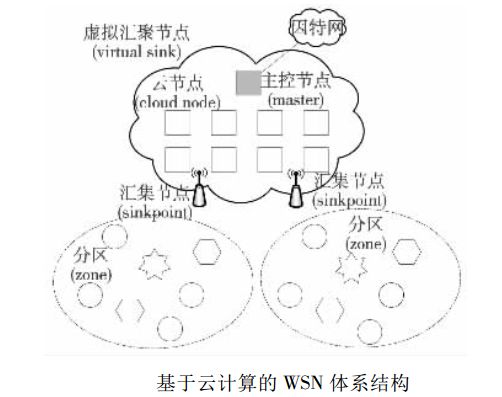
2. Partition Sensor Organization
Sensors are assigned to a partition based on certain rules. For example, sensors can join the partition represented by the nearest aggregation point. Sensors in each partition can be of the same type or different types, forming a local wireless sensor network that is independent of other partitions. All local wireless sensor networks are connected to form a whole through the cloud. Sensors in a partition can be organized in a flat structure or hierarchical structure.
In a multi-layer WMSN structure, sensors of the same type are organized at the same level, forming a WSN; the lower-level WSN connects to the upper level through central nodes, and the central node of the upper level forwards data for the lower level. At the same time, the central node of the upper level can also process the forwarded data, thus scheduling the activities of sensors in its layer, such as sleeping or activation. This working mode reduces energy consumption compared to sensors being continuously activated. However, it also makes the design and maintenance of sensor software more complex. Additionally, the central node needs to handle and forward a large amount of data, which will accelerate its energy consumption.
In the cloud-based architecture, another organization method for partitioned sensors is shown in the figure. Sensors of the same type each form a WSN and send their data to the aggregation point (if the same type of sensors cannot communicate directly, different types of sensors can act as gateways). Each type of sensor forms a logically independent but physically overlapping WSN, and these WSNs connect to the same aggregation point. Data processing software is deployed in the cloud (not just at the aggregation point connected to these WSNs). After collecting and processing various perception data, the cloud can (through the aggregation point) schedule the sensors in each independent WSN to operate in a reasonable manner. Compared to the cluster-based single-layer structure, this organization method achieves smaller scales of independent WSNs in partitions, higher transmission efficiency, and still maintains a global perspective on control information.
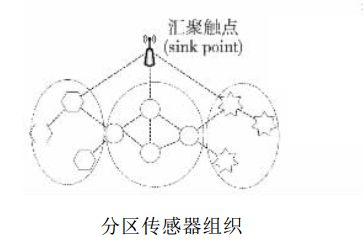
3. Cloud Organization
When cloud nodes form a cloud, the following issues need to be considered: a) How to deploy cloud nodes in the WSN area; b) How cloud nodes communicate with each other; c) How nodes are organized into the cloud; d) How data collected by aggregation points is stored in the cloud and processed in the cloud.
The selection of the location of cloud nodes (aggregation points) depends on the distribution of sensors in the wireless sensor network. Ideally, the location of aggregation points can minimize data transmission operations throughout the network, and complex algorithms can be used for location selection. However, due to the dynamic characteristics of WSN (topological changes, routing changes, diverse data generation locations and patterns, etc.), the ideal goal is difficult to achieve. In the case of uniformly distributed sensors, a simple method is to make each aggregation point responsible for collecting data from approximately equal numbers of sensors.
Cloud nodes must communicate with each other to form a cloud. Cloud nodes need to be reasonably deployed in the WSN area, operating in a manageable environment, so there may be network infrastructure. If there is a wired network, nodes can use VPN or other methods for secure communication; if there is a mobile communication network (such as 2.5G, 3G, LTE, etc.), cloud nodes can also interconnect using these networks. However, wireless sensor networks are usually deployed in infrastructure-less environments, and self-organizing wireless networks are the only available communication method. For example, cloud nodes can be configured with the IEEE 802.11 protocol stack to form an Ad hoc network.
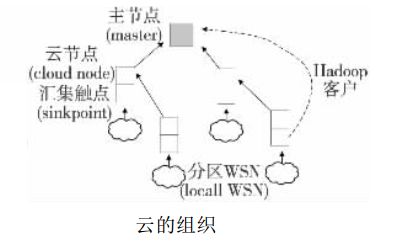
Sensor Data Upload to the Cloud
Wireless standards have undergone tremendous changes, allowing sensors to synchronize large amounts of data to the cloud and retrieve it at any time when needed. People have realized the potential benefits of the Internet of Things. We will see a variety of solutions, but ultimately, only those that are more useful and cost-effective will survive.
Through wireless connections, we can access cloud space on multiple devices. Below are several ways to synchronize sensor data to the cloud.
1. Wired Connection

This is the simplest method, originating in the 1970s and 1980s, and is the ancestor of all wireless connection methods. A microprocessor is embedded in the sensor to process the collected data, which is then uploaded via a wired network. Additionally, this processor can modify or update certain functions of the sensor. However, this method is quite restrictive, as it is impossible to have a wired connection everywhere.
2. Mobile Network Connection
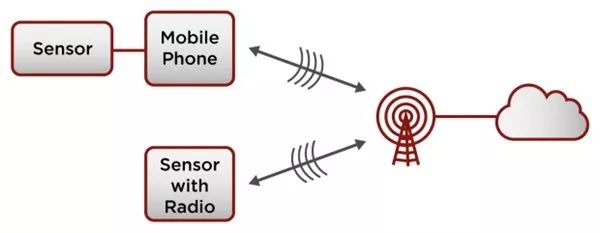
The mobile network followed the wired network and began to develop in the early 1980s. This network naturally became the first widely used wireless network. However, it has many drawbacks; first, to connect to a mobile base station, sensors still need to connect to a mobile phone via a wired connection or embed a dedicated baseband in the phone (which is costly); second, the uplink wireless transmitter requires significant power support; and finally, the data fees can be quite painful.
3. Remote Wireless Network Connection

As early as 1947, regulators opened many unlicensed wireless frequency bands, but at that time, this technology was largely ignored until the emergence of mobile phones in the 1990s, when people began to realize its value. In 2003, the 902-928 MHz and 2400-2483 MHz frequency bands became popular again, used for the latest IEEE 802.15.4 wireless standard.
The mesh networks mentioned earlier also use these frequency bands, consisting of many small low-power wireless devices that are highly interconnected, gathering sensor data from edge areas to a collection point, all of which are connected to the cloud. This ensures the coverage of the wireless network.
4. Wireless Router Connection
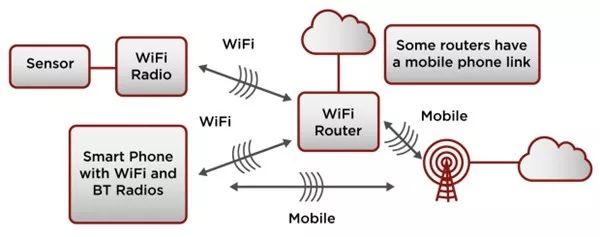
The well-known 802.11 Wi-Fi standard was established in 1997 and uses the 2400-2483 MHz and 5130-5835 MHz frequency bands. These two frequency bands have profoundly impacted people’s wireless lives, being ubiquitous in homes, companies, and public places.
Additionally, there are some more specialized routers primarily used in industrial and infrastructure fields. As long as a wired connection is established, the router can connect to the cloud. In fact, wireless routers are the main channel for people to enjoy cloud services in daily life.
With the advent of Wi-Fi functionality on smartphones, sensors that can connect directly to routers have also emerged. This means that as long as they are within the router’s signal coverage, sensors can connect to the internet anytime, eliminating the complex process of connecting to mobile base stations.
5. Mobile Phone Connection
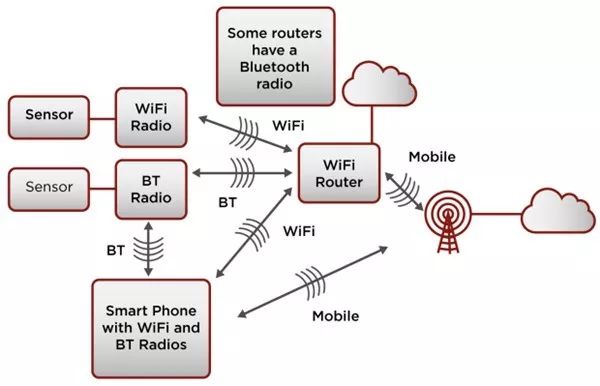
In reality, there are many instances where sensors do not need to connect to a wireless router; a mobile phone can handle everything. This way, users can directly interact with the sensors to obtain the information they need. Additionally, many application scenarios do not require long-distance data transmission; wireless headphones are one example.
This data transmission can be completed via Bluetooth, which operates in the same 2400-2483 MHz frequency band. This standard was born in 1998 and became part of the 802.15.4 standard in 2003, but it continues to play its role today.
Recently, technicians introduced a new low-power Bluetooth technology (BLE), which has low power consumption, making it suitable for simple sensors with low rates or duty cycles. This technology provides strong support for the development of small sensors, allowing those that previously required a wireless network or mobile network (such as various smart wristbands) to now interact directly with mobile phones.
Recently, technicians have also added Bluetooth functionality to traditional Wi-Fi routers. This means that sensors equipped with BLE technology can connect directly to the cloud through the router, eliminating the need to connect to a mobile phone.
With the continuous expansion of various wireless standards, we can drive the development of the Internet of Things in more ways.
With the development of the Internet of Things, sensor networks integrating cloud computing technology elevate the data processing capabilities of sensors to a new level, greatly increasing the information obtained. The integration of multiple functions is an inevitable trend, which will also indirectly promote the development of sensor technology.
Source: Sensor Technology
Editor: Song Bingjia
